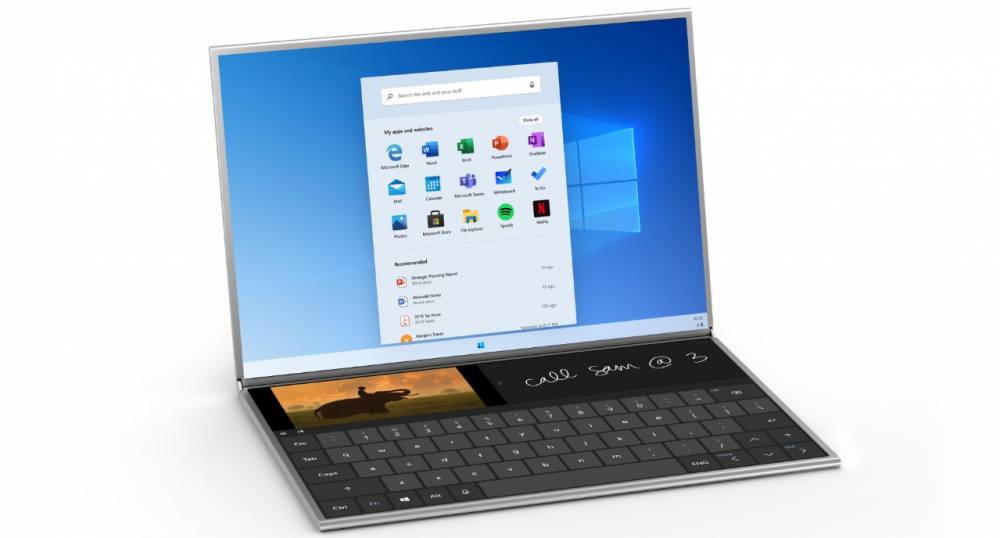
Microsoft Discontinues Support For Windows 10X
Microsoft discontinues support for Windows 10X
According to a recent report, Microsoft is likely to abandon Windows 10X, the concept operating system that was to serve as a streamlined, simplified rival to the likes of Chrome OS.
"Microsoft will not ship Windows 10X this year, and the OS as we know it today will almost certainly never arrive," Brad Sams wrote last week on Petri.com. Sams then added, citing "people familiar with the company's plans," "The company has shifted resources to Windows 10 and 10X has been put on hold for the time being."
Sams' account was unsurprising. Previously, reports about Windows 10X stated that it would launch in the spring of 2021; in fact, its debut was to take the place normally reserved for the year's first-half Windows 10 feature upgrade. That fell by the wayside earlier this year, when Microsoft announced plans to release Windows 10 21H1 on a more conventional schedule.
This month, Windows 10 21H1 is expected to begin rolling out to customers' PCs.
10X's changing message
At Microsoft's 2019 Windows 10X announcement, the operating system was positioned as "the best of Windows 10 built to enable unique experiences on multi-posture dual-screen PCs." In plain English, this meant that 10X would power a new hardware category of two-screen, tablet-notebook hybrids that Microsoft and its partners — the Lenovos, Dells, and HPs — would manufacture. However, Microsoft's entry, codenamed the Surface Neo, was later withdrawn.
Then, a year ago, Windows 10X morphed into an operating system for single-screen devices that sounded suspiciously like Chromebook competitors, at least according to Microsoft's terse description. "We need to focus on meeting customers where they are now," Panos Panay, who was appointed head of Windows and Microsoft's device group three months earlier, said. "Our customers are leveraging the cloud's power more than ever, and we believe the time is right to take a different approach to this acceleration."
Another year has passed, and Microsoft, according to Sams, has secured Windows 10X, if not permanently, then for an extended period. What is it. That is. What is hell?
How come?
Taking a stab at explaining Microsoft's motive(s)
Microsoft is unlikely to respond to that question. And even if it does, the rationale will be incomplete. That is how business is conducted.
We've ranked the most likely reasons for Windows 10X's retreat or retraction, or whatever term you prefer.
Microsoft has previously attempted to shrink, shrivel, pare, and deflate Windows. The attempts have been unsuccessful.
2012: Windows RT. Introduced concurrently with Windows 8, RT was designed for devices equipped with the 32-bit ARM architecture. However, by prohibiting traditional x86 applications that defined what made Windows, well, Windows, RT created an unforced error of monumental proportions. Ironically, Microsoft will continue to support the OS for another year and a half, until Jan. 10, 2023.
2017: Windows S. Much like Windows RT — if something fails, hey, let's try again — Windows S was an attempt to create an OS spin-off that forbade users from running x86 Windows applications in favor of apps from the Windows Store. Initially envisioned as "inspired by students and teachers, streamlined for simplicity, security, and superior performance," and thus aimed squarely at the educational market, where Chromebooks have thrived, it wasn't long before Microsoft's marketing downgraded Windows S to a "mode" and positioned it as a godsend for businesses as well. Since then, the company has largely ceased discussing Windows S; however, S remains officially alive.
2019: Microsoft touts the new concept of Windows 10X. However, it never makes it to RT or S, as it is dropped before users can get their hands on it.
Microsoft clearly has difficulty producing a scaled-down operating system, as evidenced by the three strikes. However, the reason for this is decidedly obscure. One guess: Microsoft's prohibition of thousands of traditional Win32 applications in favor of the typically subpar Windows Store apps.
Perhaps Microsoft determined that a greater emphasis on something other than Windows 10 was not worth the effort previously believed necessary, given the boost Windows 10 received from the COVID pandemic.
The coronavirus and subsequent lockdowns, which resulted in remote work and remote schooling, sparked a surge in new Windows 10 PC sales as families rushed to (ideally) equip each member with a machine. Industry research firms noted massive year-over-year increases in PC shipments — Gartner estimated a 32% increase in the March quarter — and Microsoft reported a 44 percent increase in non-Pro Windows OEM revenue (sales of Windows 10 Home to computer makers) in its most recent earnings call.
With such gains, why was there a rush to muddy the revenue picture with something untested, such as Windows 10X? None, it appears.
The most recent earnings statement demonstrated Windows' hierarchy within the company. The division of the company that includes Windows, dubbed "More Personal Computing," generated 31% of total revenue, placing it third among the three divisions. There are therefore more worthwhile investments for Microsoft to make than Windows, such as "Intelligent Cloud," which accounted for 36% of total revenue.
Courses and Certification
Microsoft Excel Course and Certificate
JAVA Programming Course and Certificate

